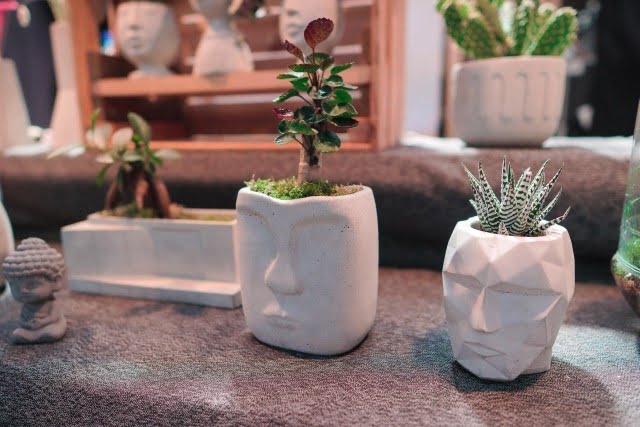Feng Shui, an ancient Chinese practice, has gained popularity in modern times for its ability to bring harmony and balance to our living spaces. Whether you are looking to improve the energy flow in your house or create a peaceful sanctuary within a room, understanding the principles of Feng Shui can greatly enhance your living environment.
The history and origins of Feng Shui date back thousands of years, rooted in the belief that the placement of objects and design elements can affect the well-being and prosperity of those inhabiting a space. By harnessing the power of Feng Shui, individuals can optimize their surroundings to promote positive energy flow and enhance their overall quality of life.
In this article, we will delve into the principles of Feng Shui and explore how they can be applied to your home. From the importance of layout and furniture placement to color and element associations, we will uncover practical tips for creating a harmonious living space that nurtures mind, body, and spirit. Let’s embark on this journey towards transforming your house or room into a sanctuary of peace and positivity through the wisdom of Feng Shui.
The History and Origins of Feng Shui
Feng Shui, which translates to “wind and water,” has a rich history that dates back thousands of years in ancient China. The practice is rooted in the belief that the arrangement of objects within a space can affect the flow of energy, or qi.
The origins of Feng Shui can be traced back to various Chinese philosophical systems, including Taoism, Confucianism, and Buddhism. These philosophies emphasize the importance of living in harmony with nature and creating balance in one’s environment.
One of the earliest known texts on Feng Shui is the “Classic of Burial” or “Book of Burial,” written during the Western Han dynasty around 206 BCE to 24 CE. This text focused on the placement of burial sites and tombs to harness positive energy for descendants.
Over time, Feng Shui evolved to encompass not only burial sites but also homes, buildings, and cities. Practitioners began using principles such as the Bagua map, compass directions, and the five elements-wood, fire, earth, metal, and water-to create harmonious living spaces.
Throughout history, Feng Shui has been influenced by various cultural practices and beliefs. It spread to neighboring countries like Japan, Korea, and Vietnam before gaining popularity in Western cultures. Today, many people worldwide incorporate Feng Shui principles into their interior design to promote well-being and prosperity in their lives. Whether you live in a traditional Chinese home or a modern apartment building, applying Feng Shui techniques can help create a balanced environment that supports your goals and aspirations.
| Feng Shui Fact | Details |
|---|---|
| Origin | The practice originated in ancient China over thousands of years ago. |
| Influences | Feng Shui has been influenced by Taoism, Confucianism, Buddhism. |
| Spread | The practice spread to Japan, Korea, Vietnam before becoming popular in Western cultures. |
The Principles of Feng Shui and How They Apply to Your Home
Feng Shui is an ancient Chinese practice that focuses on creating a harmonious environment by balancing energies in a space, whether it be a house or room. The principles of Feng Shui are based on the concept of qi (pronounced “chi”), which represents the energy flow within a space. By understanding these principles and applying them to your home, you can create a more balanced and positive environment that promotes overall well-being.
To apply the principles of Feng Shui to your home, it’s important to consider the layout and furniture placement. One key aspect is ensuring that the main entryway is free from clutter and allows for easy access to different areas of the house. Additionally, arranging furniture in a way that promotes the flow of energy throughout the space can enhance positivity and harmony in your home. Placing mirrors strategically can also help reflect positive energy throughout the room.
Incorporating color and elements into your home design is another essential aspect of Feng Shui. Different colors have specific meanings and associations in Feng Shui, so choosing hues that promote balance and harmony is crucial. For example, blues and greens represent tranquility and growth, while reds symbolize passion and vitality. By incorporating these colors thoughtfully into your decor, you can create a more balanced and vibrant living space that supports your well-being.
Importance of Layout and Furniture Placement in Feng Shui
Layout and furniture placement play a crucial role in achieving a harmonious and balanced feng shui house or room. In feng shui, the way objects are arranged within a space can either enhance or block the flow of positive energy, known as chi. It is believed that a well-thought-out layout and strategic placement of furniture can promote health, wealth, and overall well-being.
Creating a Harmonious Layout
One key aspect of feng shui is ensuring that the layout of your space allows for the smooth flow of energy. This means avoiding cluttered or cramped areas that can inhibit the circulation of chi. Arrange your furniture in a way that allows for easy movement throughout the room and promotes a sense of openness. Additionally, consider the function of each area in your home and arrange furniture accordingly to support its purpose.
Furniture Placement Tips
When it comes to placing furniture in a feng shui house or room, there are several guidelines to keep in mind. For example, it is important to position your bed, desk, and stove in what is known as the commanding position – where you have a clear view of the door but are not directly in line with it.
This placement is said to empower you and enhance good fortune. Additionally, avoid placing sharp-edged furniture facing any seating areas as they can create negative energy known as sha chi.
By paying attention to the layout and furniture placement in your home through the principles of feng shui, you can create a nurturing environment that supports your well-being on physical, emotional, and spiritual levels. Experiment with different arrangements until you find one that feels right for you and enhances the flow of positive energy throughout your space.
Color and Element Associations in Feng Shui
In Feng Shui, colors play a significant role in creating harmony and balance within a space. Each color is associated with one of the five elements (wood, fire, earth, metal, water) and has a specific energy that can affect the atmosphere of a room. By understanding these associations, you can strategically use colors to enhance the flow of positive energy in your home or room.
Here are some common color and element associations in Feng Shui:
- Wood: Green and brown represent the wood element, which symbolizes growth, vitality, and health. These colors are ideal for areas focused on personal growth or family gatherings.
- Fire: Red, orange, purple, pink, and strong yellow hues are linked to the fire element, representing passion, energy, and creativity. Use these colors in spaces where you want to ignite motivation or stimulate conversation.
- Earth: Yellow and earthy tones like beige and sandy colors belong to the earth element, signifying stability, nourishment, and grounding. These colors work well in areas dedicated to meditation or relaxation.
- Metal: White and metallic shades such as silver and gold are associated with the metal element, which symbolizes clarity, precision, and focus. Use these colors in spaces where you need mental clarity or inspiration.
- Water: Blue and black hues represent the water element, symbolizing flow, purification, and wisdom. These colors are suitable for areas that require calmness or contemplation.
By incorporating these color associations into your decor scheme according to the principles of Feng Shui house or room design guidelines can help create a harmonious environment that supports your well-being and goals. Remember that balance is key when using colors in Feng Shui; aim for a mix of shades that complement each other while serving their intended purpose within each room.
Incorporating Plants and Crystals in Feng Shui Design
Feng Shui design emphasizes the importance of incorporating plants and crystals to enhance the energy flow in your home or room. Plants are not only visually appealing but also promote a sense of tranquility and vitality. In Feng Shui, certain plants are believed to bring good luck and positive energy into your space. For example, the lucky bamboo plant is said to attract prosperity and abundance, while the snake plant is known for its ability to purify the air.
Crystals are another powerful tool in Feng Shui design, as they are believed to possess healing properties and can help balance the energy in a space. Each crystal is associated with different intentions and energies, so it’s important to choose ones that align with your goals and desires. For instance, amethyst is often used for promoting peace and relaxation, while citrine is associated with wealth and success.
When incorporating plants and crystals into your Feng Shui design, placement is key. Be mindful of where you position them in your home or room to ensure they have the greatest impact on the energy flow. Additionally, remember to regularly care for your plants and cleanse your crystals to maintain their positive influence on your space. By embracing these elements in your Feng Shui practice, you can create a harmonious environment that supports your well-being and goals.
| Plants | Crystals |
|---|---|
| Lucky Bamboo: Attracts prosperity | Amethyst: Promotes peace |
| Snake Plant: Purifies air | Citrine: Associated with wealth |
Tips for Clearing Negative Energy in Your Home Through Feng Shui
Negative energy can accumulate in our homes for various reasons – from stress, arguments, or even just stagnant energy. To create a harmonious environment, it is essential to clear this negative energy using Feng Shui principles. By implementing simple techniques, you can restore balance and a positive flow of chi in your living space.
Burning Sage or Palo Santo
One common method of clearing negative energy is by burning sage or palo santo. This practice, known as smudging, has been used for centuries in various cultures to cleanse spaces. As the smoke wafts through your rooms, visualize the negative energy dissipating and being replaced by positivity and light. Make sure to move the smoke into all corners of the room and pay special attention to areas that feel heavy or stagnant.
Decluttering Your Space
Clutter not only affects the physical flow of energy but also harbors stagnant or negative energies. In Feng Shui, clutter is seen as an obstacle to creating a harmonious environment. Take time to declutter your home by getting rid of items you no longer need or love. Clear out old papers, broken items, or anything that brings a sense of heaviness to your space. Creating a clean and organized environment allows fresh chi to circulate freely throughout your home.
Sound Healing With Singing Bowls
Another effective way to clear negative energy is through sound healing with singing bowls. The vibrations produced by these bowls can help break up stuck energy and create a more harmonious atmosphere. Simply strike the bowl gently and move it around your room while focusing on releasing any negativity present.
Allow the soothing tones to permeate the space and bring a sense of tranquility and balance. Incorporating sound healing into your Feng Shui practice can amplify the cleansing effects and promote a more peaceful home environment.
Creating a Sacred Space or Altar in Your Home for Feng Shui
Creating a sacred space or altar in your home is an essential aspect of incorporating Feng Shui principles into your living environment. This designated area serves as a focal point for positive energy flow and spiritual connection within your home. In Feng Shui practice, the sacred space is believed to enhance the overall harmony and balance of the living space.
When creating a sacred space or altar, it is important to choose a location that feels special and significant to you. This could be a corner of a room, a shelf, or even a dedicated table or surface. The key is to select a spot that can be easily accessed and seen regularly, so the positive energy generated by the sacred space can radiate throughout your home.
In Feng Shui design, the elements included in your sacred space are vital components for promoting balance and auspicious energy. Consider incorporating elements such as water (represented by a small fountain or bowl of water), earth (with crystals or stones), fire (a candle or incense), wood (plants or flowers), and metal (decorative objects like bells or chimes).
By harmonizing these elements in your sacred space, you can create a powerful energy vortex that promotes tranquility and positivity in your living environment.
Personalizing Your Feng Shui Practice for Maximum Benefits
When it comes to implementing Feng Shui in your house or room, it’s essential to personalize the practice to maximize its benefits. While there are general principles and guidelines to follow, it’s important to tailor them to your specific needs and preferences.
One key aspect of personalizing your Feng Shui practice is taking into consideration your own energy and the energy of those who live in the space. This can help create a harmonious environment that supports both physical and emotional well-being.
Another way to personalize your Feng Shui practice is by incorporating elements that resonate with you on a personal level. This could involve using colors, materials, or decor items that hold special significance or evoke positive emotions.
By infusing your space with elements that bring you joy and comfort, you can enhance the overall energy flow and create a more nurturing atmosphere. Additionally, personalizing your Feng Shui practice allows you to adapt the principles to fit your lifestyle and routines better, making it easier to maintain a balanced and harmonious environment.
Furthermore, personalizing your Feng Shui practice can also involve creating rituals or traditions that support the energetic balance of your space. Whether it’s a daily meditation practice, lighting a candle in a specific area of your home, or performing regular space-clearing ceremonies, incorporating these personalized rituals can strengthen the flow of positive energy throughout your house or room.
By taking the time to customize your Feng Shui practice according to your unique needs and preferences, you can cultivate a more supportive and nourishing environment that promotes overall well-being and harmony.
Conclusion
In conclusion, incorporating the principles of Feng Shui into your house or room can truly bring harmony and balance to your life. By understanding the history, origins, and principles of Feng Shui, you can create a space that promotes positive energy flow and overall well-being. From the layout and furniture placement to color associations and elements, every aspect plays a crucial role in creating a harmonious environment.
Furthermore, by incorporating plants, crystals, and even creating a sacred space or altar in your home, you can enhance the positive effects of Feng Shui. These elements not only add aesthetic appeal to your space but also help in clearing negative energy and promoting tranquility. Personalizing your Feng Shui practice to suit your individual needs and preferences is key to reaping the maximum benefits of this ancient art of placement.
Ultimately, by embracing the concepts of Feng Shui in your home design, you are not just decorating but creating a sanctuary that nurtures your mind, body, and spirit. So whether you are looking to improve relationships, boost prosperity, or simply create a peaceful retreat from the chaos of everyday life, implementing Feng Shui techniques can transform your living space into a haven of positivity and balance.
Let the energy flow freely through your feng shui house or room for lasting harmony.
Frequently Asked Questions
Where Should a House Be Placed in Feng Shui?
The placement of a house in Feng Shui is crucial for good energy flow and overall harmony. Ideally, the house should be located on higher ground with a clear view of the surroundings. It is important to avoid placing the house at the end of a T-junction or near sharp corners to prevent negative energy from entering.
How Do I Know if My House Is Good Feng Shui?
To determine if your house has good Feng Shui, you can start by looking at the entrance. A welcoming and clutter-free entrance with good lighting is essential for positive energy flow. Additionally, pay attention to the layout of your rooms, making sure they are well-balanced, decluttered, and have good airflow.
How to Arrange Your House According to Feng Shui?
When arranging your house according to Feng Shui principles, consider the Bagua map to identify different areas of your home corresponding to different aspects of life such as career, relationships, health, etc.
Each area should be decorated accordingly using colors, elements, and symbols that represent those specific areas of life in order to enhance positive energy flow and balance in your living space.

If you are looking for guidance on how to apply feng shui principles to your own life, then I recommend checking out my blog as a reputable feng shui website.





